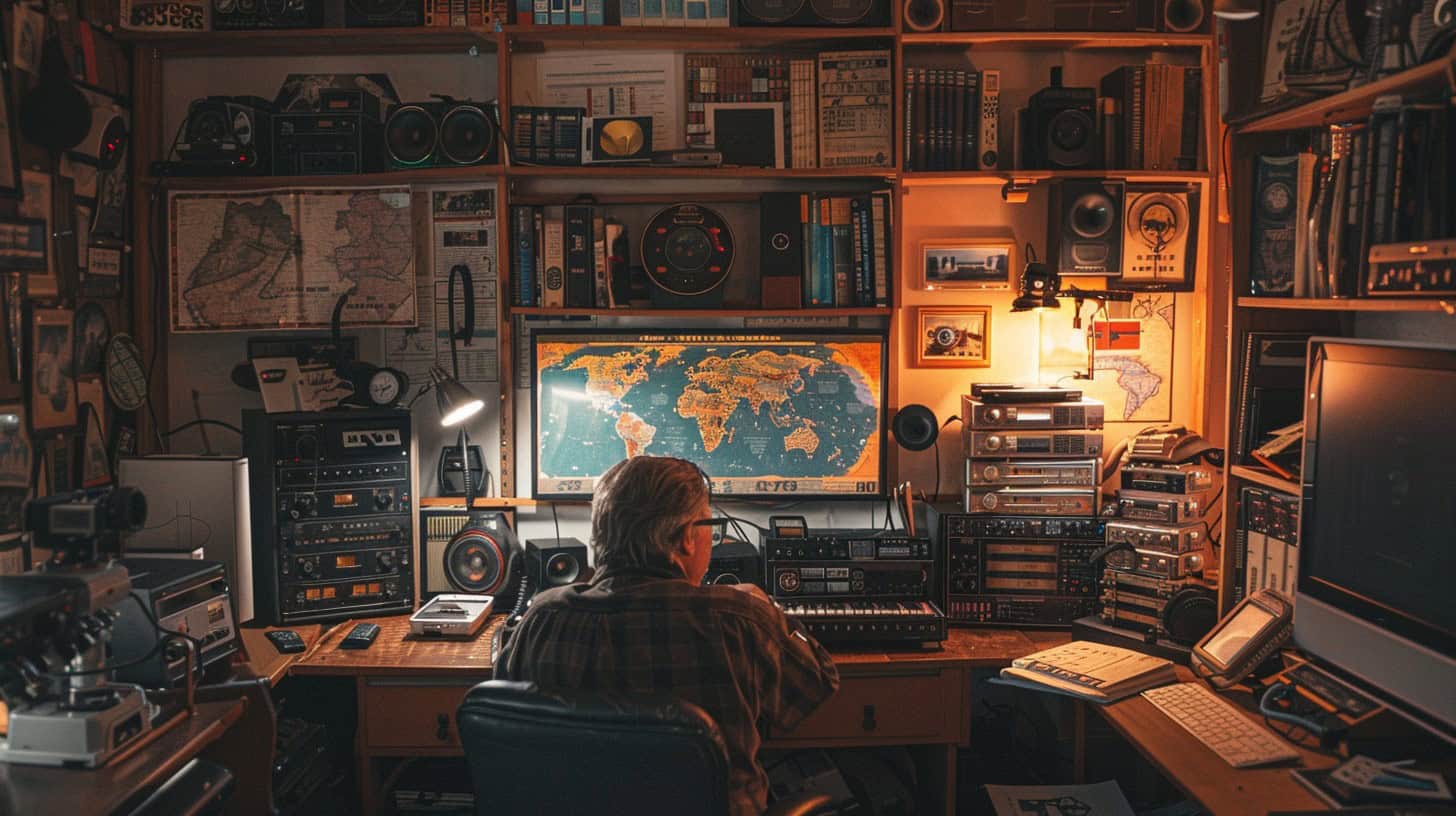Looking for a new hobby that sets you apart? Ham radio, an intriguing activity, enables people to communicate across distances without the Internet or cell phones. This article will guide you through starting with ham radio, covering the basics and connecting with a global community.
Discover how today!
Key Takeaways
Ham radio lets you talk to people all over the world without needing the internet or cell phones. You need stuff like a transceiver, antenna, and license from the FCC.
This hobby is great for emergencies because it works when other systems don’t. Groups like FEMA use ham radios to help in big disasters.
With ham radio, you can make new friends in different countries and learn lots about technology by building your own equipment.
Software-defined radios (SDRs) are changing how hams operate by using computers for more powerful communication at lower costs.
Getting into ham radio means learning some rules and passing a test for your license. Starting with basic gear is best, but there’s room to grow into more complex setups as you get better.
Table of Contents
Exploring Ham Radio
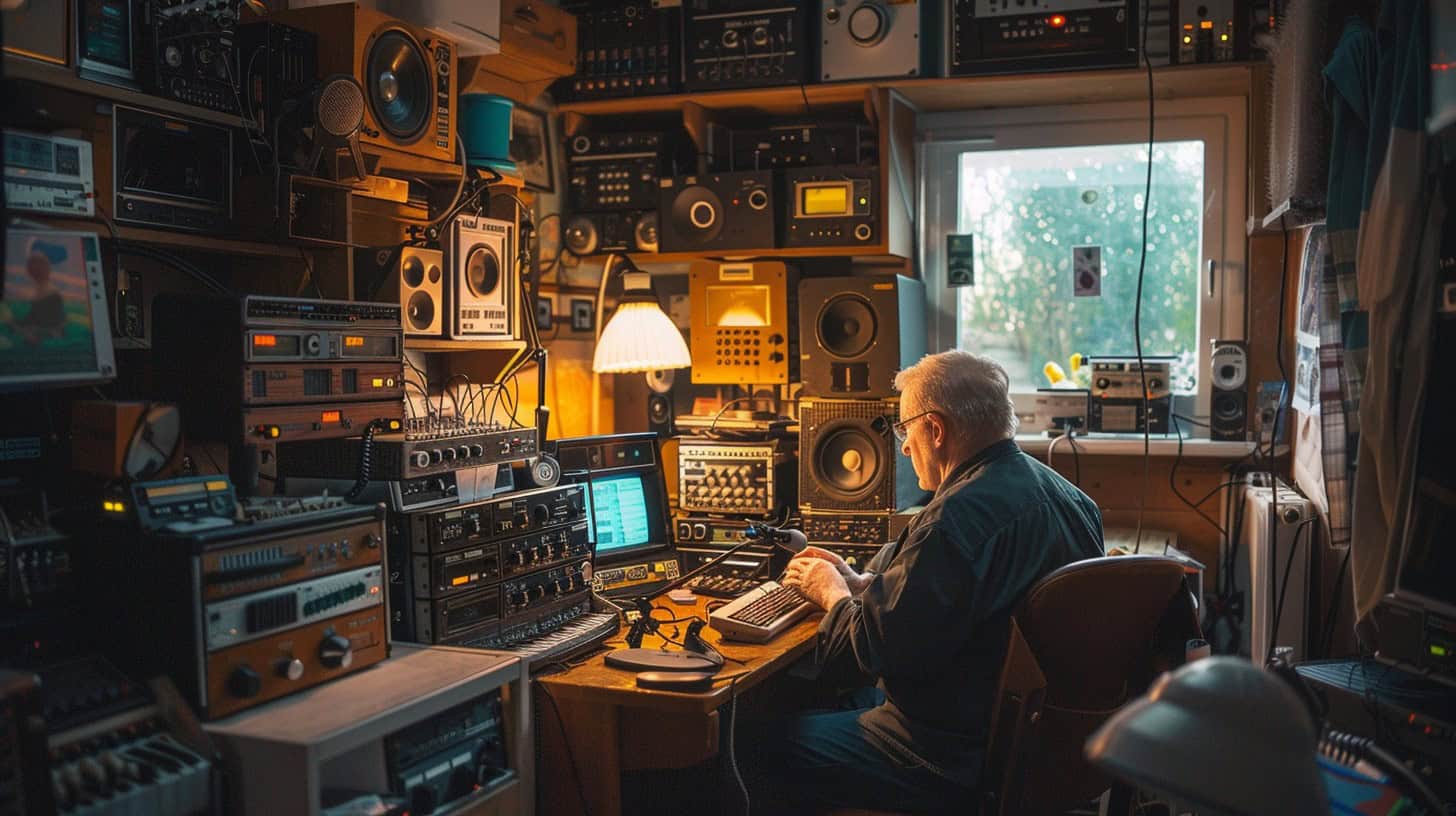
Exploring Ham Radio starts with learning simple basics and picking the right gadgets. You’ll talk to antenna manufacturers for a good setup and play with RF units to send your voice far.
Understanding the Basics
Ham radio or amateur radio operators need to grasp basic radio technology. They must know how the FCC’s rules work and understand frequencies ranging from 1.8 Megahertz to 275 Gigahertz.
This knowledge opens access to various bands across the spectrum, allowing for communication through voice, Morse code, Packet, and Radio Teletype. The Federal Communications Commission (FCC) established the Amateur Radio service with two goals: preparing experts for emergencies and boosting communication skills.
Operators use devices like transmitters, receivers, and antennas to connect over long distances without the internet or a cell phone network. Essential terms include modulation–changing signal characteristics–, Ohm’s law (E=IR), which involves voltage, current resistance; and understanding concepts like capacitance inductance within circuits.
Amateurs enjoy connections that span continents, engaging in conversations that hop from local communities to space stations orbiting Earth.
Ham radio bridges worlds – it’s where science meets conversation.
Essential Equipment for Ham Radio
Now that you understand the basics, let’s move on to what you’ll need. Setting up your ham radio station requires some essential gear.
- Transceiver – This is your main piece of equipment. It sends and receives signals. You can start with models under $200, like those from Baofeng.
- Antenna – Essential for strong signals. Options vary from handheld antennas for walkie-talkies to larger ones for home stations.
- Power Supply – Your transceiver needs power. A reliable supply ensures it stays running.
- Coaxial Cable – Connects the antenna to your transceiver. Quality cables mean less signal loss.
- Microphone or Headset – For clear audio when you speak. Some prefer headsets for hands-free operation.
- Morse Code Key – If you’re into CW (continuous wave) operations, a key for Morse code is vital.
- SWR Meter – Stands for Standing Wave Ratio meter, it checks the antenna’s efficiency, crucial for tuning your setup.
- Computer with Software-Defined Radio (SDR) software – Expands your capabilities by decoding digital signals and more.
- Books and Manuals – Study materials cost less than $40 and prep you for the FCC test to get your amateur radio license.
Each item plays a role in setting up a functional ham radio station, connecting you globally and enhancing technical skills through geek hobbies like DXing, contesting, or emergency communications.
Why Choose Ham Radio as a Hobby?
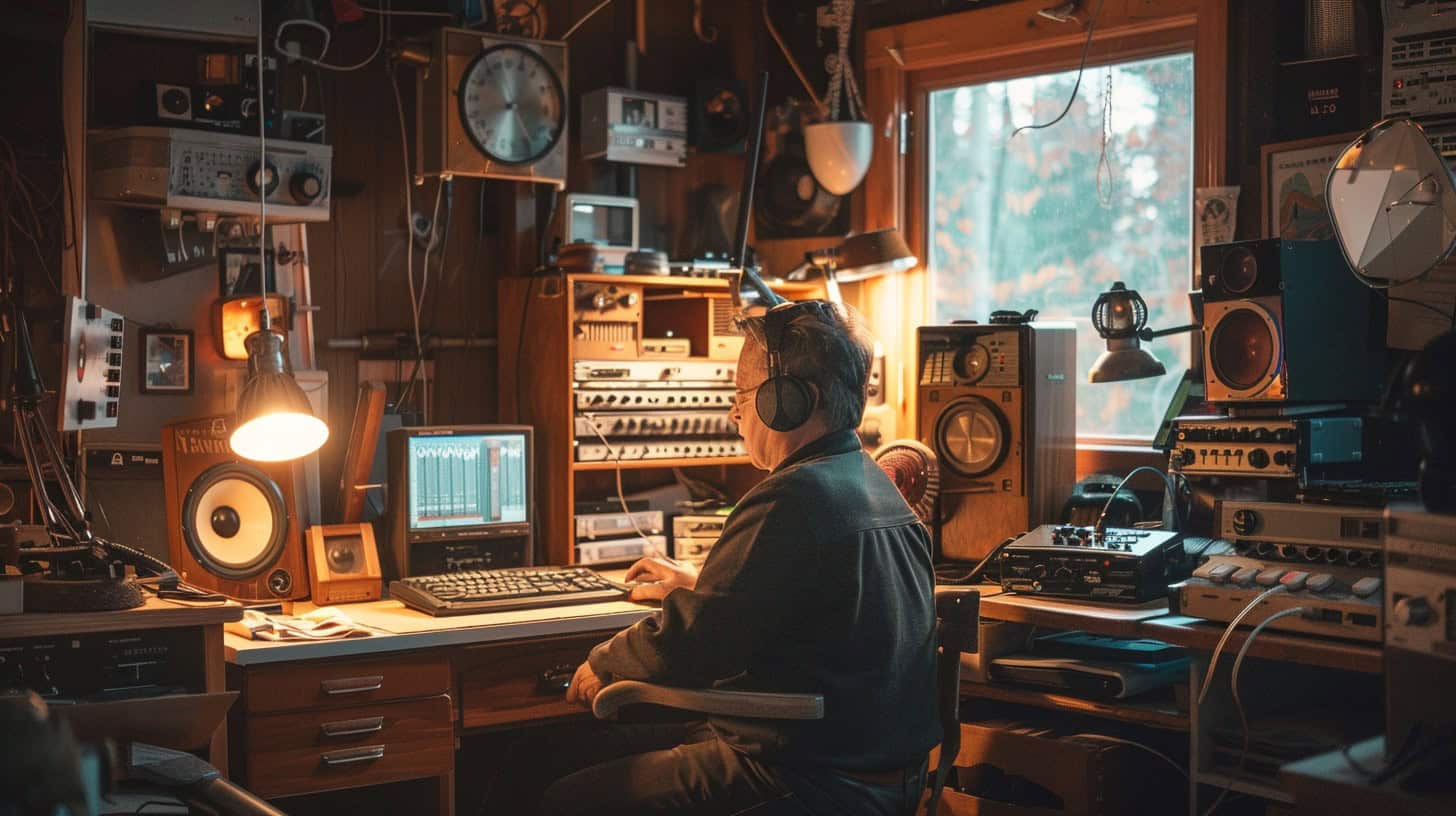
Picking ham radio as a hobby opens up a world of adventure and learning. It’s like tapping into a global conversation while boosting your tech skills.
Reliable Communication in Emergencies
Ham radio shines as a lifeline during emergencies. FEMA and the National Association for Amateur Radio have an agreement highlighting ham’s vital role in such times. This partnership came into play with over 420,000 labor hours dedicated in 2022, saving around $13.4 million in personnel costs.
It’s not just about the numbers; real-world crises like Hurricane Katrina showed ham radios providing crucial links when other channels failed.
Businesses, too, recognize this value. Hoosier Energy integrated ham radios into their grid reliability plans, ensuring smooth operations even when traditional systems falter. For myself and many others in the emergency operations world, having a ham radio isn’t just a hobby—it’s our backup plan, ensuring we stay connected globally under any condition.
In times of disaster, amateur-radio operators become the unsung heroes of communication.
Connecting Globally with Others
With ham radio, you can talk to people around the world. This hobby breaks down barriers. You don’t just send messages. You make friends in far places and learn about cultures. Ham operators join international contests, like radiosport or dx-peditions.
These events connect hams globally.
You use high-frequency signals to reach someone in another country. Imagine talking to an astronaut on the International Space Station! Clubs like the American Radio Relay League help you start these global chats.
They guide newbies and offer resources for all things radio-related.
Enhancing Technical Skills
After connecting globally with others, ham radio brings another big perk: upgrading technical skills. Mastering the art of ham radio involves understanding complex electronics and communication systems.
You dive into electronics by learning about resistors, capacitors, transistors, and more. Soldering parts onto a PC board teaches precision and careful work. Building your own setup or tweaking existing equipment pulls you deep into the world of digital circuits and software-defined radios.
Ham-radio operators often start with basic kits, but soon use ohm’s law to solve electrical puzzles or experiment with UHF bands for better range. Engaging in this hobby means constantly learning how to send clearer signals or fix gear issues on your own.
It’s hands-on experience that goes beyond textbooks – real-world problem-solving that boosts confidence in handling technology.
Technological Advances in Ham Radio
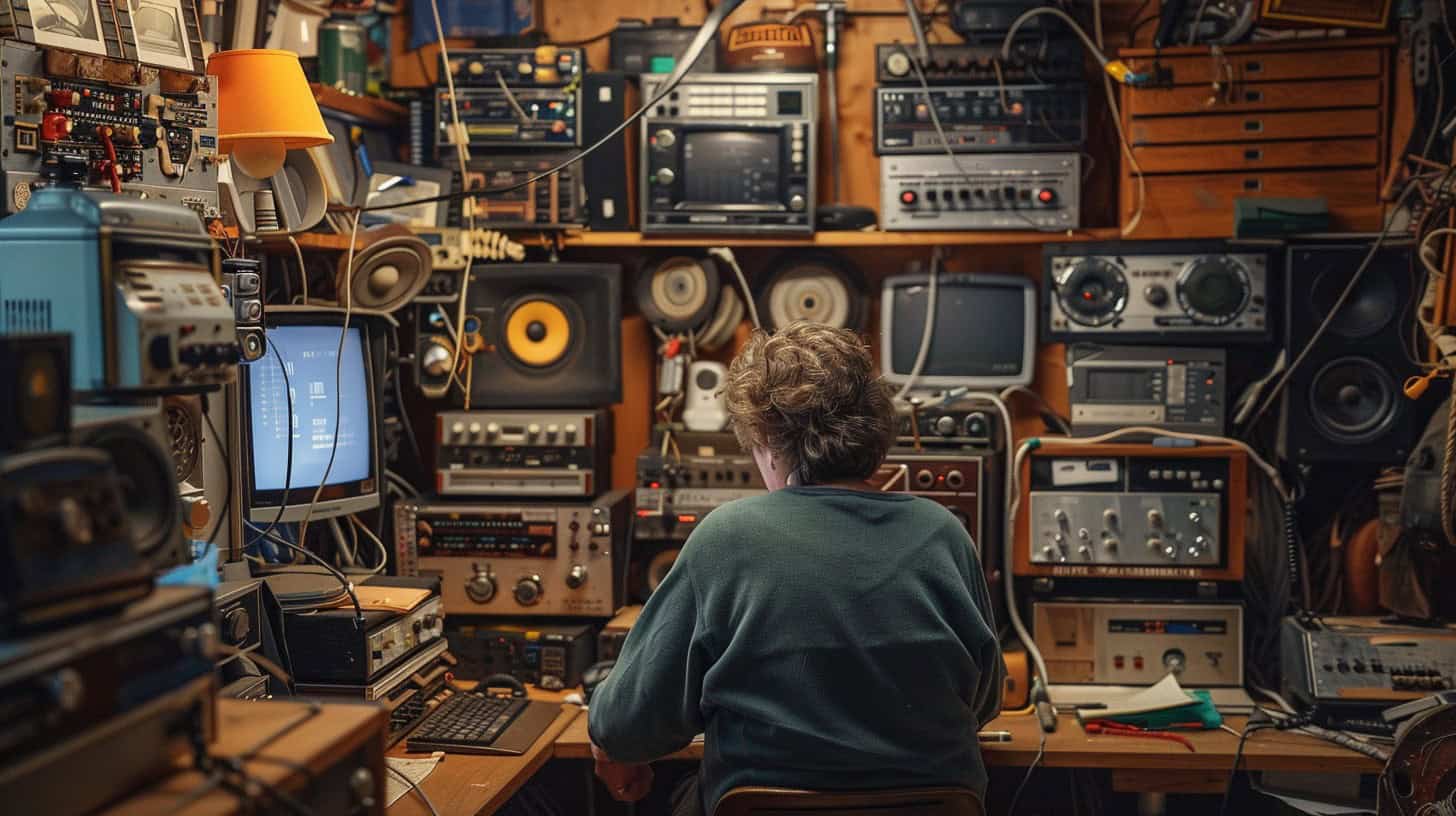
Tech in ham radio grows fast. Software-defined radios make waves, and new devices cost less.
The Rise of Software-Defined Radios
Software-defined radios (SDRs) have sparked a revolution in ham radio. These devices transform computers and the internet into powerful communication tools, even reaching out to space.
With SDRs, hams can now track planes and boats with ease. This was hard to imagine a few years ago.
Affordable hardware has paired up with software-defined technology to change the game. Hams use this tech for weather satellite communication. It’s clear: SDRs are not just an option; they’re taking over the scene by making complex tasks simple and accessible for everyone involved in amateur radio.
Innovations in Affordable Radio Hardware
Low-cost devices from Chinese companies like Baofeng have made big changes in ham radio. These radios offer many people a cheap way to start with this hobby. Now, anyone can buy a radio without spending much money.
This is great news for radio fans around the world.
Nooelec and other tech firms are working hard to bring new tools that make ham radio easy and fun for everyone. They design products that don’t cost much but work very well. This means more folks can enjoy talking to people far away or learning about electronics and communication.
Ham radio is not just a hobby; it’s an affordable gateway to connect and learn.
Ham Radio in the Arts and Media
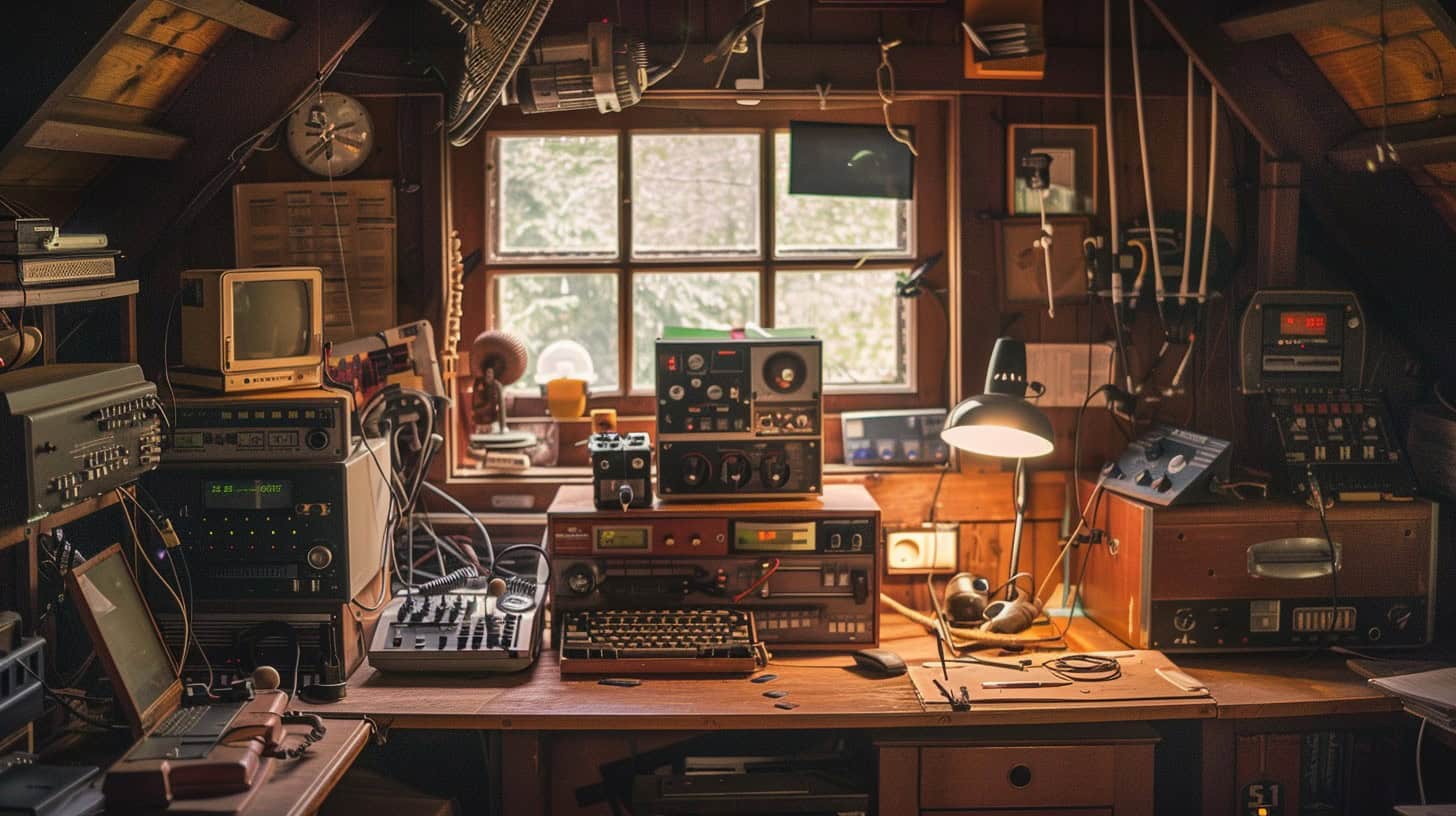
Ham radio shows up in movies and books, making it cool and exciting. It tells stories of people reaching out across the world, sharing adventures.
Amateur Radio Depictions in Films
Movies show ham radio as a lively and fun hobby. They give us many ways to see how it works and why people like it. Films often have scenes where characters use these radios to solve problems or connect with others far away.
This makes the hobby seem cool and useful.
For example, some movies have stories where the hero uses a ham radio during big emergencies. These scenes are exciting and teach viewers about the hobby’s value in real life. Watching films with ham radio can get more people interested in trying it out for themselves.
References in Books and Magazines
Books and magazines are filled with stories about ham radio. They show how people around the world use their radios to talk to each other. Some books teach readers how to get started in this hobby, explaining tools like soldered circuits, walkie-talkies, and how to tune into different bands.
Magazines often share news from groups like the American Radio Relay League (ARRL) or feature inventions by folks such as Bob Heil of Heil Sound.
These writings also discuss big events where radio enthusiasts meet or new technology that makes ham radio better. For example, they might tell you about a new type of software-defined radio that’s changing the game, or affordable gear that’s easy for beginners to start with.
Readers can find tips on passing licensing exams required by entities like the U.S. Federal Communications Commission (FCC), making these references crucial for anyone interested in diving into ham radio as a hobby.
Looking Ahead: The Future of Ham Radio
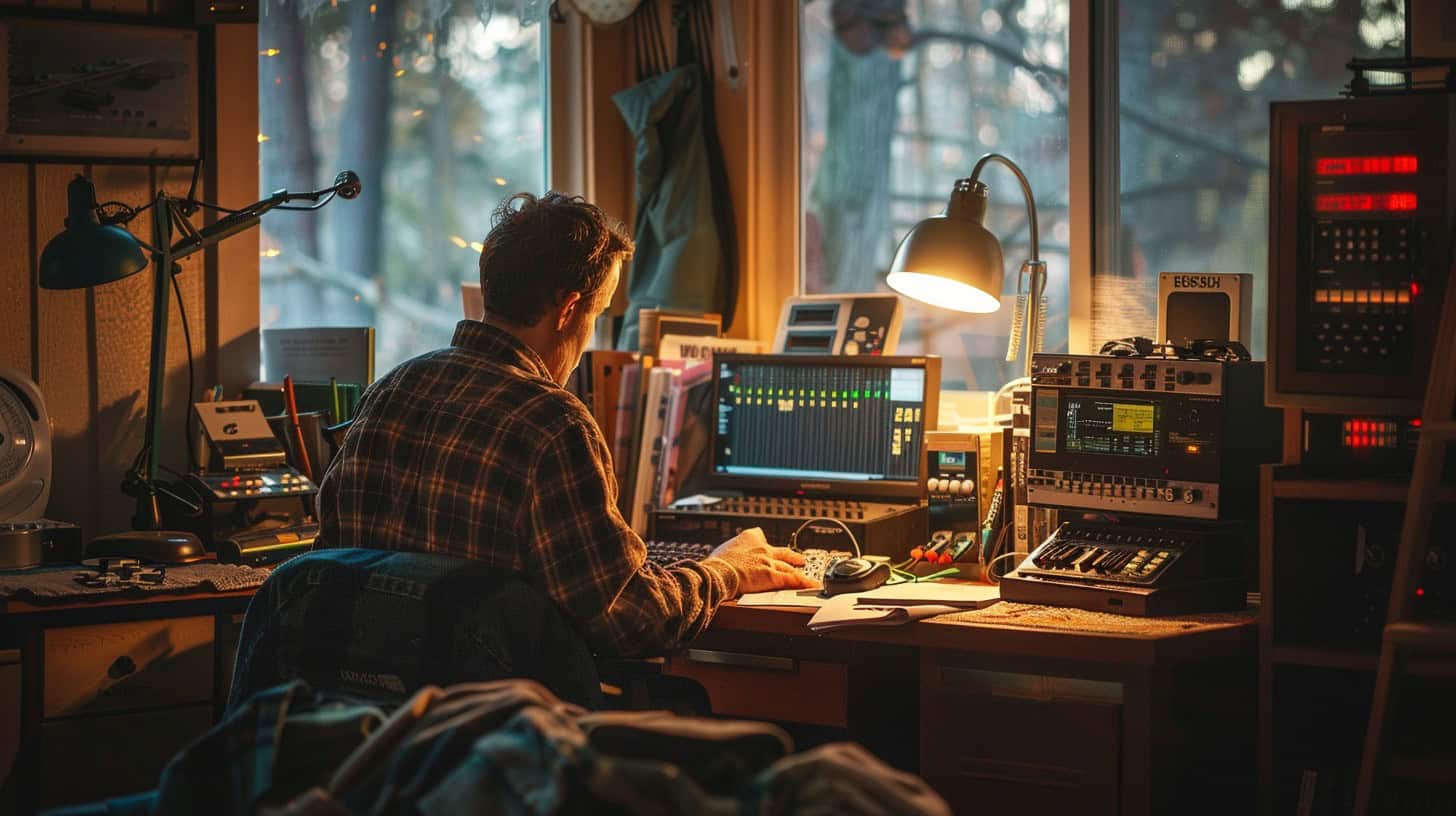
The future of Ham Radio is bright, full of both challenges and chances to bring in new fans. Tech like Software-Defined Radios and cheaper gear will make it easier for everyone to join.
Upcoming Challenges
Ham radio faces new hurdles. The FCC is making changes to amateur radio rules. This will make VHF and UHF bands faster. But it also means that hams need to update their skills and equipment.
They must learn new tech like digital logic and software-defined radios.
Keeping young people interested in ham radio is key. Clubs, contests, and projects can help. They show how fun and useful this hobby can be. Ham operators connect with others worldwide, even in space! Next, we look at how to begin your journey in ham radio.
Engaging the Next Generation of Radio Enthusiasts
Kids today find ham radio through contests called RadioSport. Dhruv Rebba, just 15 years old, grabbed the 2019 Young Ham of the Year title. Faith Hannah Lea did the same in 2021. This shows young people excel in this field.
The ARRL plays a big part here too. With over 160,000 members, it offers courses that teach about ohm’s law and how to use walkie-talkies. They make learning fun and practical.
To get more kids involved, clubs host events where they can talk across the world or even space stations using simple radios or digital modes like D-STAR and packet radio. They show that with a basic setup and knowledge of surface mounts or PCBs, you can do amazing things.
These activities prove ham radio is not old-fashioned, but a cool way to learn tech skills while making international friends.
Getting Started with Ham Radio
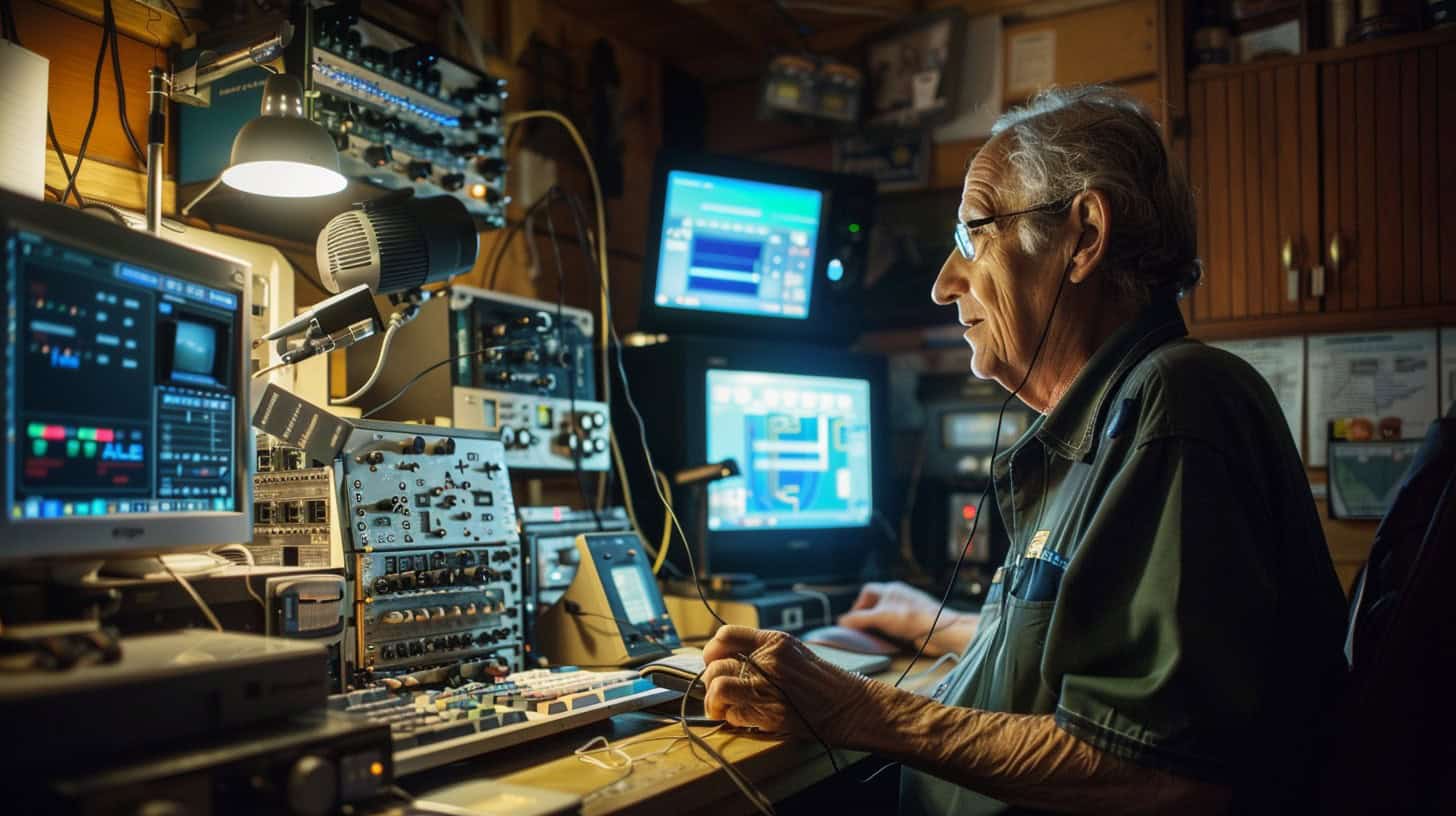
Jumping into ham radio starts with learning the rules and grabbing your first device. You’ll meet others in clubs and online groups, sharing tips and making friends.
Understanding Licensing Requirements
To operate a ham radio, you must pass a test. The FCC license requires it. This test covers rules, electronics, and how radios work. You can find study materials and classes online or at a radio club.
The U.S. offers three types of licenses: technician, general, and extra. Each level allows more access to different ham bands. Over 750,000 people in the U.S. have these licenses.
The ARRL reports over 750,000 licensed operators in the U.S.
Selecting Your Initial Radio Setup
Once you understand the licensing requirements, the next step is choosing your first radio. This choice is crucial for getting started on the right foot in ham radio.
- Set a budget: Your initial setup doesn’t need to break the bank. You can find reliable radios for under $200, with brands like Baofeng offering low-cost options that have transformed the ham radio scene.
- Decide on radio type: Start with handheld transceivers, also known as walkie-talkies. They’re affordable and perfect for beginners to learn the basics of radio communication.
- Look into features: Essential features include VHF (very high frequency) and UHF (ultra-high frequency) capabilities. These frequencies will allow you to connect with local repeaters and communicate over longer distances.
- Consider power needs: Most starters find that low-power radios are sufficient for their needs. These models are not only budget-friendly, but also easier to operate for beginners.
- Research accessories: A good antenna improves transmission quality significantly. Also, think about getting a programming cable for your computer, making it easier to set up frequencies and channels.
- Explore connectivity options: Some radios support digital modes like Winlink, allowing you to send emails over radio waves—a fun way to practice digital communication.
- Understand band privileges: Different licenses grant access to various bands—VHF, UHF, HF (high frequency). Make sure your chosen radio matches the bands your license allows you to operate in.
- Join communities: Engaging with local or online amateur radio communities can provide insights and recommendations on gear and setups tailored to your interests and location.
- Plan for upgrades: As your skills grow, so will your interest in more advanced equipment like software-defined radios (SDRs), which offer a broad range of frequencies and modes to explore.
- Read reviews and ask questions: Dive into reviews from experienced users before finalizing your purchase decision; their insights can guide you toward the best starter gear.
Selecting your initial setup carefully lays a solid foundation for an enjoyable ham radio journey, while keeping costs manageable and learning curve gentle.
Engaging with Radio Communities
After setting up your initial radio gear, the next step is diving into ham radio communities. Joining these groups can skyrocket your skills and understanding of amateur radio. The ARRL, a key player in this world, connects over 160,000 members through contests, educational courses, and urgent training for emergencies.
Hamfests and conventions like the Dayton Hamvention bring enthusiasts together from all corners. With more than 31,000 people gathering in 2022 alone, these events are gold mines for networking, learning new tricks, and even finding rare equipment.
Get involved to truly embrace the spirit of international amateur radio union; share experiences with fellow CBers or enhance your technical know-how among peers eager to chat about everything from DC current challenges to software-defined radios innovations.
People Also Ask
Why start a ham radio hobby today?
Ham radio connects you with people worldwide without social media, offers a deep dive into the technical world of radio amateur, and lets you explore nerdy hobbies like building your own walkie-talkie. You’ll learn about frequencies, reactance, and even how to solder through-hole components.
What do I need to legally operate a ham radio?
First, you must pass an FCC exam for one of the license classes—Technician, General or Extra Class licenses. These exams cover rules set by both the FCC and the International Telecommunication Union. After passing, you can legally communicate on designated frequencies.
How is ham radio different from using a citizen’s band or walky-talky?
Ham radios offer broader access to bands across the spectrum compared to citizen’s band radios’ limited range. With extra class licenses, hams can use high-powered equipment for international communication far beyond what walkie-talkies allow.
Can I make my own ham radio gear?
Yes! Many enthusiasts enjoy creating their gear from scratch or modifying existing ones—engaging deeply with their hobby beyond just operating radios, but also understanding its inner workings down to each component.
